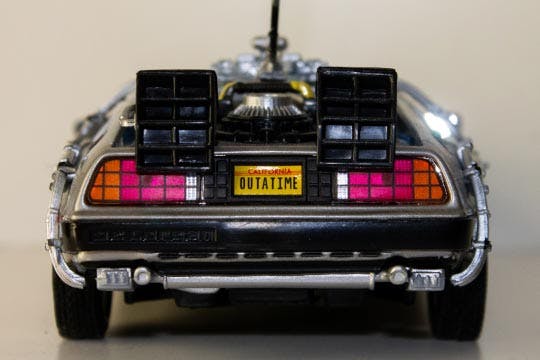Rocket
Blast off on a rocket with your team for a journey into the unknown. Your first mission is to decide on your destination, your north star. The next step is to set up the strategy and the angle of attack to achieve this objective. Remember to take an inventory of the available tools and possibly the stabilisers and obstacles that will come into play.
Pre-requisites
Add a Metaphor activity to your Beekast session. Define the issue, choose the Rocket format, and decide whether or not to personalise the predefined areas (see our advice in Suggestions and variations).
Activity settings Metaphor
- Vote: none
- Activity background: Rocket
- Time management: optional
Process
Presentation
Present the Rocket activity to the group along with the issue and what is expected of them.
Make sure they understand the categories: The objective: why are you going to complete this mission together? What course should you set to reach this unknown star?
The context: what tools are available to make this project a success?
- The crew: how should team members work together? What are each person’s responsibilities?
- The heat shield: what protection is planned if there’s overheating?
- The stabilisers: what methods will be used to avoid flying off course?
The strategy:
- The base: who or what will you be able to rely on to carry out this mission (business, technical, organisational, and financial resources)? Who’s going to control the rocket thrust at take-off?
Remind the group about the rules: no judging activities suggested and no conversation during the exploration phase.
Exploration
Participants take 5 minutes to reflect on the topic
Then they submit their ideas in the different categories. Estimate a time for this phase and end it either when the time is up or when participants stop sending in ideas.

Discussion
There are two methods for discussing the ideas put forward, which can be adjusted according to the size of your group:
- Method 1 - Small group : each participant quickly explains the ideas they suggested in each category.
- Method 2 - Larger group : go through each category with the participants and make sure each idea is understood by the whole group.

Group similar ideas together: keep just one idea and add a marker beside it to indicate that it was suggested multiple times. (Add a number or symbol counter, for example, ‘x 5’ or ‘***’.)
Summary
Once all ideas have been sent and ‘cleaned up’, the group will have a good overview of the topic. Then you can ask them to summarise this overview by collectively answering the following questions:
- Where are we now?
- Where should we go?
- We’ll fail if…
- We’ll succeed if…
One potential next step is to host a brainstorming activity to take a deeper look at the risks and obstacles mentioned.
Suggestions and variations
During the summary activity, you can note down answers to the questions in the discussion area using a Board activity or record them on a Beekast slide.
The rocket format can also be used as part of continuing improvement work on your processes (using a retrospective model):
The group, which is represented by the rocket, talks about the strengths that propel it (the rocket engines) and the weaknesses that slow it down (gravity) from reaching its objectives (the moon).
Be sure to try out the other visual brainstorming activities in Beekast to add variety to your sessions and avoid fatigue among your participants.
Check out the speedboat format. It’s a good way to formulate a team’s objectives and identify risks. Or use the hot air balloon format to highlight what must be jettisoned to move forward.
These templates may interest you

Back to the Future

Innovation Matrix



 Beekast
Beekast